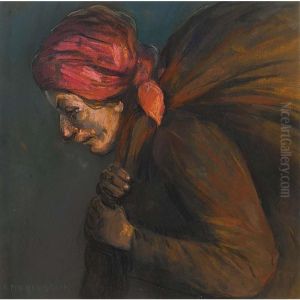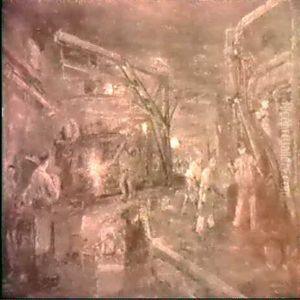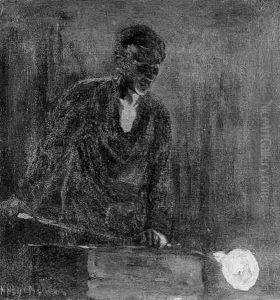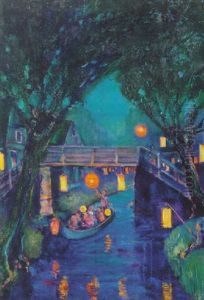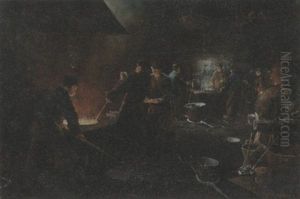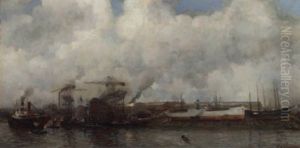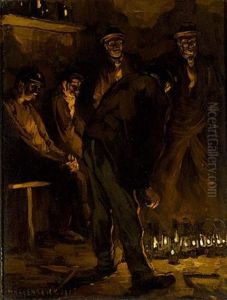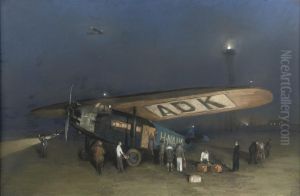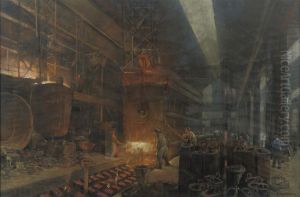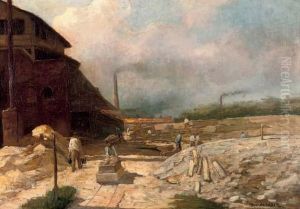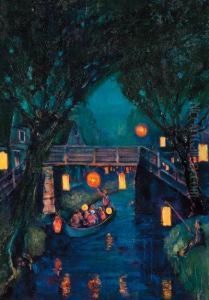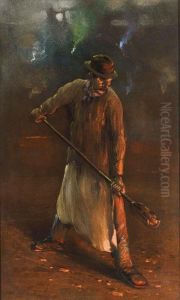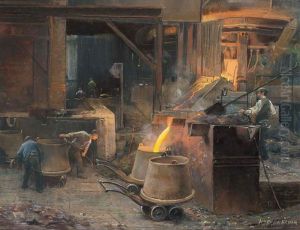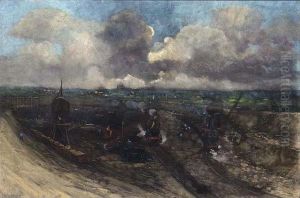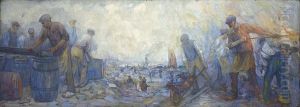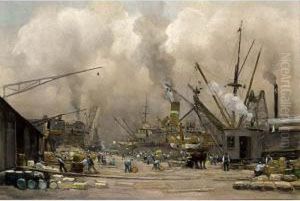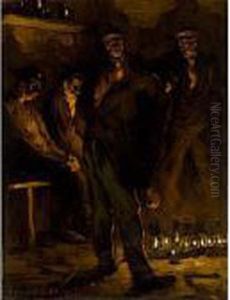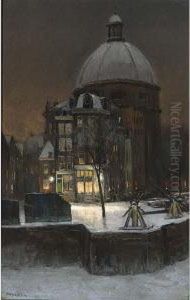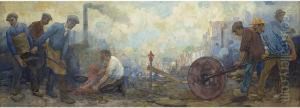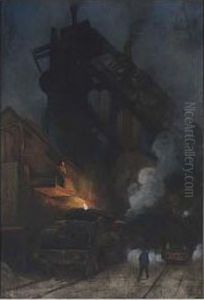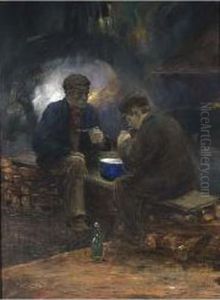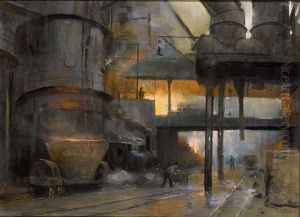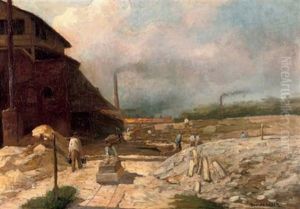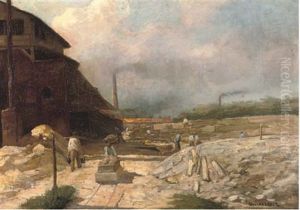Herman Heijenbrock Paintings
Herman Heijenbrock was a Dutch painter and lithographer, born in Amsterdam in 1871. He was renowned for his unique focus on industrial and labor themes, making him a distinctive figure in the art world of the late 19th and early 20th centuries. Unlike many of his contemporaries who were drawn to natural landscapes and portraits, Heijenbrock was captivated by the burgeoning industrial landscape of the Netherlands and beyond. His work provides a visual document of the industrial revolution, showcasing factories, mines, and workers in a manner that bridged both artistic and documentary realms.
From an early age, Heijenbrock showed a keen interest in art, but his path was not straightforward. Initially, he embarked on a career in business, yet his passion for painting and sketching, particularly subjects that others might overlook, led him to pursue art more seriously. By the turn of the century, he had established himself as a painter who could capture the essence of industrial life. His artworks are characterized by their attention to detail, vibrant colors, and the ability to convey the dynamic energy of industrial settings.
Heijenbrock was not just a passive observer of industrial scenes; he immersed himself in the environments he depicted, often spending time in factories and mines to better understand the workers' conditions and the intricacies of industrial processes. This hands-on approach lent an authenticity to his work that was appreciated by both the working class, who saw their lives reflected in his art, and by a more elite audience that was fascinated by the industrial advancements of the era.
In addition to his paintings and lithographs, Heijenbrock was also an author, writing about art and industry. His commitment to depicting the industrial landscape extended to his founding of a museum dedicated to industrial and social history, further solidifying his legacy as an artist who not only documented but also celebrated the industrial age.
Herman Heijenbrock passed away in 1948, leaving behind a rich body of work that continues to be studied and admired for its unique perspective on an era that dramatically reshaped society. His art remains a testament to the transformative power of industrialization, seen through the eyes of someone who found beauty and dignity in the labor and machinery that powered it.
